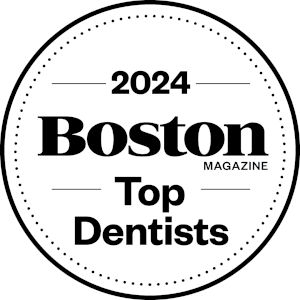

Dental Bone Grafts
In Boston
The term “bone graft” may sound a little frightening. But when understood, in its proper context, dental bone grafting is an excellent tool that allows dental specialists to perform amazing restorative and cosmetic procedures that leave your mouth healthier and looking more aesthetically pleasing.
WHY CHOOSE US
- Award winning dentists
- In practice for over 50 years
- 3 convenient locations
We are all committed to excellence and exceeding the expectations of our patients.
We are a group of award-winning dentists that covers a full range of specialties.


JOIN our
Dental Partners of Boston
Prevention Program
It’s a benefit you can’t
afford to miss.
No Deductibles
| No Yearly Maximums
| No Waiting Periods
We are a group of award-winning dentists that covers a full range of specialties.


What Are Dental Bone Grafts?
If untreated for long enough, gum disease can damage the jawbone surrounding the teeth. This often leaves a depression in the bone. Having a tooth pulled can also cause a similar effect. In many situations, dentists are now able to grow bone where degradation has occurred around the teeth. This is done with a bone graft. There are many types of bone grafts that we will explain later.
The exact process may vary depending on your specific situation. However, usually, we first lift the gums and thoroughly clean the tooth’s roots below. After this step, we prepare the site and insert the new grafting material into the prepared site. Today, there are new biologically active gels and growth factors added to the graft to help stimulate and enhance new bone growth more effectively.
There Are Many Different Kinds Of Dental Bone Grafts
An ever-evolving variety of bone-building techniques restore bone depending on the location and the severity of bone loss. Bone grafting is highly effective when done by an experienced professional. Often, a very simple bone graft is all that is required. Grafting methods may include:
- Particulate grafts
- Block grafts
- Sinus lift procedures
Bone Grafts In Preparation For Dental Implants
One of the more unknown side effects of tooth extraction is that the bone almost immediately begins to shrink where it once supported a tooth. For example, after extraction in the top jaw bone, a shrinking of 25% can occur within the first 3 months.
Modern best practices for a tooth extraction, when an implant is planned, is to place a graft in the cavity to reduce bone loss. A graft can minimize bone loss from 25% to 8% and help preserve bone so that a periodontist can place a dental implant. When significant bone loss occurs due to tooth extraction, patients may be unable to receive dental implants unless the existing bone is fortified and built up.


A Bone Graft and Dental Implants Can Transform Your Smile and Your Life
If you would like to transform your smile with dental implants, schedule a consultation today!
Small Grafts
When a tooth is lost, there are a few ways to ensure that you don’t suffer excessive bone loss. One of our dentists will work with you to determine what options you have. Ideally, a small graft placed within the empty socket ensures minimal bone loss. Demineralized bone granules, similar in appearance to sand, are packed into the socket. A protective collagen membrane coats the granules and the socket is closed with sutures.
The procedure is simple, but your recovery time is generally no shorter than any other bone graft procedure. It will take several weeks, but your body will integrate the granules into your jaw’s bone until a permanent solution is decided. If you are able to replace the missing tooth with a dental implant, the bone level will remain indefinitely. When replacing the missing tooth with the granule bridge, some of the bone levels will decrease over time.
Medium Grafts
In some of our patients’ lives, a dental bridge or graft may not have been an immediate option. When these patients come in years later, they may need a slightly more complex bone graft. For these patients, the periodontist makes a small incision in the gums in the area of the missing tooth. The dentist cleans and prepares the underlying bone. The dentist places demineralized bone granules to restore the bone in the area in preparation for a new dental implant or cosmetic bone restoration.
Often bone granules produce better results. If your dentist decides that using your own bone granules is in your best interest, they usually take them from the jawbone near your wisdom teeth. Large pieces of bone are rarely needed in this case. Most often the dentist shaves a small amount of bone off the jaw and adds demineralized granules. The new graft is protected by a collagen membrane that protects the graft for the few months it needs to be integrated into the original bone. This type of graft can be used for one or multiple areas of missing teeth.
Large Grafts
Patients who have been missing teeth for a few years or decades, often experience advanced levels of bone loss that prevent an adequate restoration of the teeth. In cases of advanced bone loss, the jaw bone can be as thin as a pencil. Our Boston dental office often sees long-term denture wearers with this type of advanced bone loss. Unfortunately, these patients can no longer successfully use dentures and are also no longer a candidate for dental implants. Extensive bone grafting is necessary to restore the missing teeth as well as restore an essential quality of life.
Periodontists use a similar process for advanced bone loss as with medium grafts. The periodontist uses the patient’s bone supplied by another part of the jaw, hip, or tibia in the form of a small block. This block is anchored in place in the recipient site using specialized bone screws and sometimes plates. The periodontist uses bone granules to enhance the graft. A collagen membrane protects the entire site, then closed tightly with sutures and left to heal for several months. After the site is fully healed, the periodontist can place the dental implants into the new bone.
Sinus Lift
The upper jaw has challenges. Patients missing upper molar teeth often experience extensive bone loss which affects the maxillary sinuses. The maxillary sinus is a hollow cavity that sits just above the molars in the upper jaw. After losing a majority of your upper molars, the bone above them begins to droop. Between bone loss from the missing teeth and the descending maxillary sinus, patients can end up with bone as thin as an eggshell in this area.
A periodontist cannot place dental implants when so much bone has been lost. Extensive grafting is required to raise the sinus floor and thicken the bone in the area. This procedure is commonly referred to as a “sinus lift.” With this procedure, the periodontist makes an incision in the gum tissue to access the maxillary sinus. The maxillary sinus membrane is cut and lifted in order to perform the graft. It’s extremely important that you find a professional with exceptional experience and knowledge of this procedure. A graft of this type will need at least 4 months to heal before placing dental implants.
Let Dental Partners of Boston Improve Your Quality of Life Today!
Call us today to schedule a consultation with our highly experienced and professional team. While bone grafting is a surgical procedure, it plays a critical role in making new teeth possible. New teeth improve your life but extend it as well. The art and science of implant dentistry have brought us these highly specialized and successful techniques to restore what was lost and make it possible to have a beautiful smile. Bone graft surgery is temporary, but being able to eat, laugh, talk, and smile will benefit you through the rest of your life!
Schedule Appointment


Read Our Reviews
Procedure Doctors




Dr. Guzman and his assistant have a good rapport with patients. When I left I felt comforted and reassured about certain procedures. The staff were friendly and the offices immaculate!!!!!











